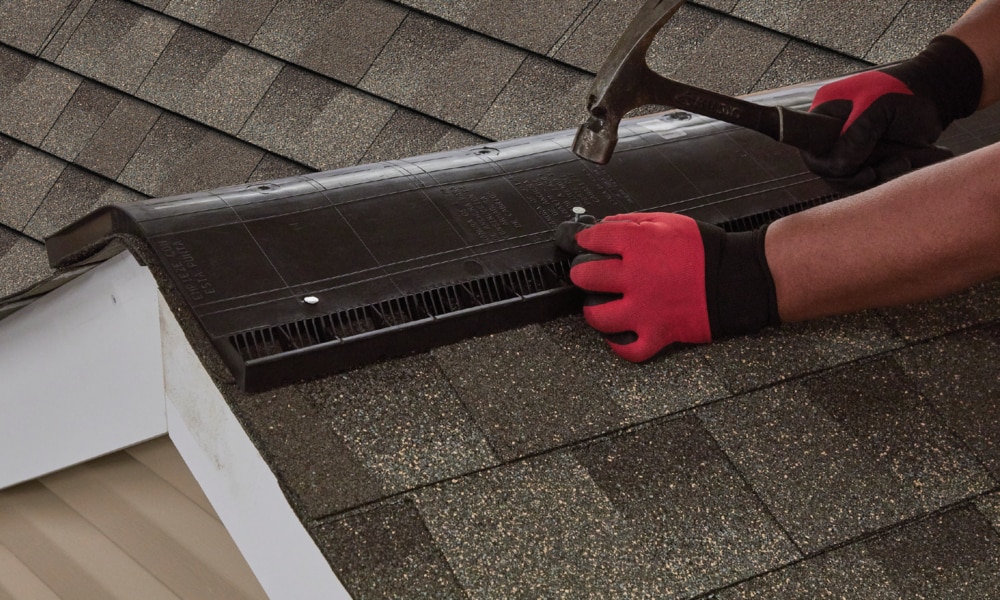A balanced attic ventilation system is important to help prevent roofing system issues. This ventilation system consists of both ridge vents installed at the peak of the roof and intake vents installed at or near the soffits. Properly ventilating your attic helps reduce excess heat and moisture in the summer and also helps keep your roof system cold during the winter to reduce the freeze thaw cycle that creates ice dams.
What is a ridge vent?
A ridge vent is an air exhaust vent installed on the peak of a roof. When installing this vent, an air slot is first cut in the roof deck at the roof's peak. This air slot is then covered by the ridge vent itself. They help to provide continuous, uniform exhaust ventilation at the highest portion of the attic and are designed to help resist wind-driven rain and snow, as well as insect and debris infiltration. Ridge cap shingles are then typically installed over the ridge vent to protect it, and provide a clean finished look on the roof, with the exception of metal ridge vents which do not require the use of ridge cap shingles.
For the attic ventilation system to work properly, air needs to be able to enter the attic as well as exit it to provide a continuous flow of outside air through the attic space. Eave and soffit vents, or vents placed where a roof or overhang juts out over the home's exterior wall, will allow cooler, dry air to enter the lower attic space. As the air in the attic heats up, convection helps push the air to the peak of the roof where it escapes through the ridge vent. This type of "passive system" is an efficient way to ventilate an attic, as it doesn't require any energy to properly function.
When are they needed?
Depending on the amount of exhaust ventilation needed for the attic space and the physical roof design, many homes are great candidates for ridge vents. For example, homes that have an ample amount of ridge line are often properly ventilated using ridge vents.
If your attic is finished or the air in the space is conditioned, you may need a mechanical method of exhausting heat and moisture. You should consult a design professional or HVAC contractor to make sure your system is large enough to create the airflow needed to keep your attic cool.
The 1:300 rule
How much venting do you need for your attic? The Federal Housing Administration recommends that for every 300 square feet of ceiling space, you will need a minimum of one square foot of attic ventilation (evenly split between intake and exhaust ventilation). Note that the attic ventilation should always be clear of obstructions that can interfere with airflow. Local code requirements may differ, so be sure to discuss with your contractor or consult local building code in your area.
The amount of exhaust ventilation provided by the ridge vent should never exceed the amount of intake ventilation from the soffit or eave vent. If it does, you may not get enough airflow to properly ventilate the attic. It's critical to always have balanced attic ventilation.
You can calculate your attic's ventilation needs with the GAF Ventilation Calculator.
Ridge venting solutions
Different homes have different needs, and it's important to take those needs into account when exploring solutions. To find out more about these solutions and how they can be used in your home, you can browse GAF's ventilation and attic vent products.
If you think you want to change your current attic ventilation configuration, contact a roofing professional* who can let you know the pros, cons, and how much the transition will cost.
*Contractors enrolled in GAF certification programs are not employees or agents of GAF, and GAF does not control or otherwise supervise these independent businesses. Contractors may receive benefits, such as loyalty rewards points and discounts on marketing tools from GAF for participating in the program and offering GAF enhanced warranties, which require the use of a minimum amount of GAF products.

